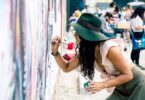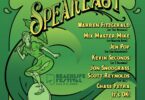The world of art is an endless realm of imagination, where creativity knows no bounds. Artists constantly seek inspiration from various sources, and references play a crucial role in shaping their work. However, the process of finding or creating references can sometimes be a challenge. This is where the power of Generative Artificial Intelligence (AI) and tools that can utilize it steps in, offering an accessible way to generate references that resonate with an artist’s vision.
The Challenge of References in Art
Before diving into how Generative AI can transform the reference-gathering process, let’s understand the challenges artists often face. References are essential because they provide a visual guide, aiding artists in understanding complex forms, lighting, textures, and proportions. Whether it’s a portrait, a landscape, or a fantastical creature, references ground the artist’s imagination in reality.
Yet, finding the right reference can be time-consuming and limiting. Photographs might not capture the exact scene an artist envisions, and copyright concerns can restrict the use of certain images. Moreover, relying solely on external references can inadvertently stifle an artist’s originality.
Generative AI: A Catalyst for Creativity
Generative AI, a subset of artificial intelligence that involves training models to create original content, has opened up new avenues for artists. Artists can create their own references tailored to their artistic intentions using generative AI and deviate from the constraints of traditional reference materials.
- Customizable References
Generative AI tools can be trained to understand an artist’s style and preferences, enabling them to generate references that align with their unique vision. For example, an artist seeking to paint a surreal landscape can input keywords and parameters related to surrealism, and the AI can produce images that capture the essence of this style.
- Fusion of Ideas
Art often thrives at the intersection of different concepts. Generative AI can combine multiple keywords or themes to generate references that merge these concepts seamlessly. This fusion of ideas can lead to incredibly unique or even weird references that can lead to a good piece.
- Overcoming Creative Blocks
Every artist encounters creative blocks at some point. Generative AI can act as a wellspring of inspiration, helping artists overcome these hurdles. By inputting vague concepts or even unrelated words, artists can prompt the AI to generate images that might bring fresh ideas and perspectives.
- Building Unique Worlds
For artists engaged in world-building, such as concept artists for video games or film, Generative AI can accelerate the creation of diverse and captivating environments. Artists can input parameters like architectural styles, ecosystems, and lighting conditions, and the AI can swiftly conjure a range of reference images that fit within the imagined universe.
- Refining Technical Skills
Generative AI can assist not only with concept and design but also with technical aspects of art. Artists can use AI-generated references to study intricate details like anatomy, textures, and lighting. This enhances an artist’s understanding of these elements and contributes to the refinement of their skills.
Ethical Considerations and Human Touch
While Generative AI offers unprecedented benefits, it’s important to consider the ethical implications. The use of AI-generated references should not replace genuine human creativity, but rather complement and augment it. Artists should approach AI-generated references as tools that facilitate their artistic journey rather than as shortcuts that replace the depth of personal exploration.
The Road Ahead
As technology continues to advance, the potential of Generative AI in the art world is boundless. Collaborations between artists and AI are on the rise which can lead to exciting new art forms that blur the lines between human ingenuity and machine assistance. With generative AI tools such as 88stacks becoming more and more accessible by the day, it might even be the norm in the future.
In conclusion, the integration of Generative AI in the art world presents an exhilarating prospect for artists seeking to enhance their creativity. By utilizing AI to craft references that align with their vision, artists can overcome challenges, unlock new avenues of imagination, and refine their technical skills. As we navigate this evolving landscape, it’s crucial to maintain a balance between using the power of AI and preserving the authenticity of human artistic expression.










